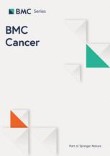
Abstract
Background
Previous studies have revealed that nearly 15–20% of selected high-risk T1–2N0 breast cancers developed LRR after mastectomy. This study is aim to indentify the risk factors of locoregional recurrence (LRR) in patients with pathologic T1–2N0 breast cancer after mastectomy in a real-world and distinguish individuals who warrant postmastectomy radiotherapy (PMRT).
Methods
Female patients treated from 1999 to 2014 in National Cancer Center of China were retrospectively reviewed. A competing risk model was developed to estimate the cumulative incidence of LRR with death treated as a competing event.
Results
A total of 4841 patients were eligible. All underwent mastectomy plus axillary nodes dissection or sentinel node biopsy without PMRT. With a median follow-up of 56.4 months (range, 1–222 months), the 5-year LRR rate was 3.9%.Besides treatment era, age ≤ 40 years old (p < 0.001, hazard ratio [HR] = 2.262), tumor located in inner quadrant (p < 0.001, HR = 2.236), T2 stage (p = 0.020, HR = 1.419), and negative expressions of estrogen receptor (ER) and progesterone receptor (PR) (p = 0.032, HR = 1.485), were patients-related independent risk factors for LRR. The 5-year LRR rates were 1.7, 3.5, and 15.0% for patients with zero, 1–2, and 3–4 risk factors (p < 0.001).
Conclusions
Risk Stratification based on age, T stage, ER/PR status and tumor location can stratify patients with pT1–2 N0 breast cancer into subgroups with different risk of LRR. PMRT might be suggested for patients with 3–4 risk factors.




Δεν υπάρχουν σχόλια:
Δημοσίευση σχολίου